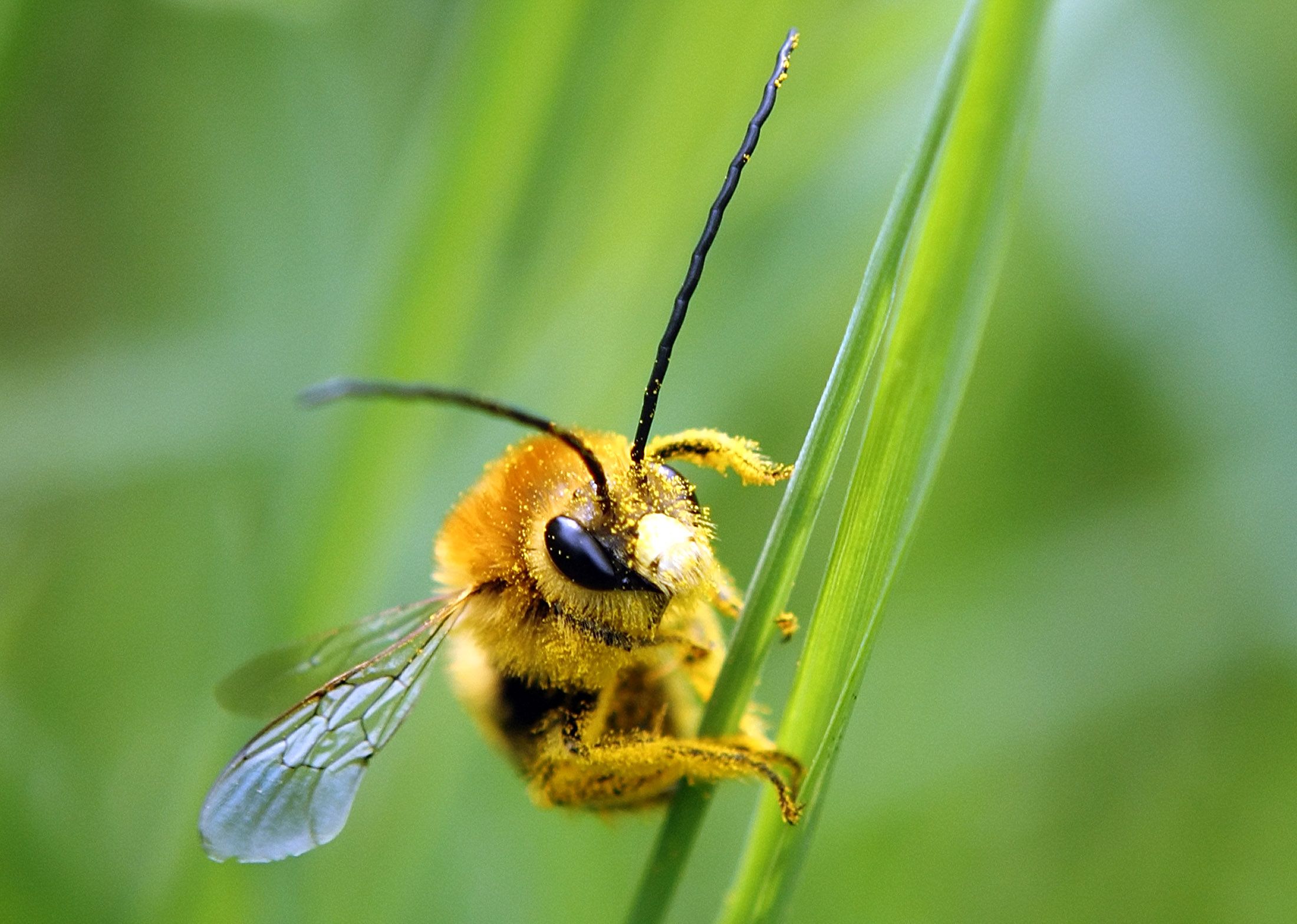
Pollinators are under threat—and that means that one in three bites of food that we eat is at risk. Additionally, this threat places the almost 90 percent of flowering plants needing pollination across the world on shaky ground, potentially endangering the wildlife that depend on them for food.
According to a report sponsored by the United Nations that draws on the research findings of about 3,000 scientific papers, 40 percent of invertebrate pollinator species—such as bees and butterflies, not birds and bats—are facing extinction. In addition, 16 percent of vertebrate pollinators, including a number of species of bats and birds, are also threatened with extinction.
Scott Black, the executive director of the Xerces Society for Invertebrate Conservation, acted as a peer reviewer for the report, which was announced February 26 by the Intergovernmental Science Policy Platform on Biodiversity and Ecosystem Services (IPBES). Black says the study is the most thorough of the kind he's seen, and sounds the alarm for governments around the world to take action for the sake of agriculture and keystone animal species that rely on pollinated plants.
"Forty percent is a large amount, and that should concern us all—because agriculture depends on pollinators, but not only because of that," Black says. "Without pollinators we'd have wheat, rice, and corn, but we wouldn't have our most nutritious foods. We wouldn't have apples and other fruits or a lot of vegetables. In the wild, everything from songbirds to grizzly bears depend on pollinated plants."
The IPBES was established in 2012, and is roughly modeled on the Intergovernmental Panel on Climate Change. The intergovernmental scientific body has 124 member governments, and its pollinator assessment—announced in Kuala Lumpur—went through two rounds of external peer review.
According to the report, the volume of agricultural production dependent on animal pollination has increased by 300 percent during the past 50 years; globally, pollinator-dependant agriculture is an industry worth up to $577 billion annually. However, pollinator-dependent crops show lower growth and stability in yield than crops that do not depend on pollinators.
"Wild pollinators in certain regions, especially bees and butterflies, are being threatened by a variety of factors," says IPBES Vice-Chair Sir Robert Watson. "Their decline is primarily due to changes in land use, intensive agricultural practices, and pesticide use, alien invasive species, diseases and pests, and climate change."
Black says the pollinator decline is part of a broader crisis of biodiversity loss. The Xerces Society, working with the International Union for the Conservation of Nature, studies bumblebee decline and has found that 25 percent of bumblebees in North America face extinction. "I think having the U.N. pay attention really does lay out not only the problems, but helps start to lay out solutions," he says. These include creating more habitat for pollinators and exercising care with the insecticides used to protect crops.
Increasingly, developed nations are looking at ways to address pollinator decline and some developing countries are doing what they can, according to Black. In the U.S., for example, President Barack Obama issued a memorandum in 2015 calling for the establishment of a National Pollinator Health Strategy. Under the strategy, U.S. federal agencies are directed to take action to help pollinator populations recover through research, public education and by partnering with the private sector. The goal is to reduce honeybee losses by reducing insecticide use and monarch butterfly decline by creating milkweed habitat, as Monarch butterfly larvae feed exclusively on milkweed plants.
Those like Black who played a role in producing this report hope it urges governments that are doing nothing to do something and those that are doing something to do more.
"I think governments sometimes don't get involved until they see the effects on the economy that a problem like this can create. This report puts this issue in those terms: The pollinator crisis is a clear economic issue because of agriculture," Black says. "This report will continue to catalyze governments to take action. We really shouldn't wait any longer."
Uncommon Knowledge
Newsweek is committed to challenging conventional wisdom and finding connections in the search for common ground.
Newsweek is committed to challenging conventional wisdom and finding connections in the search for common ground.





